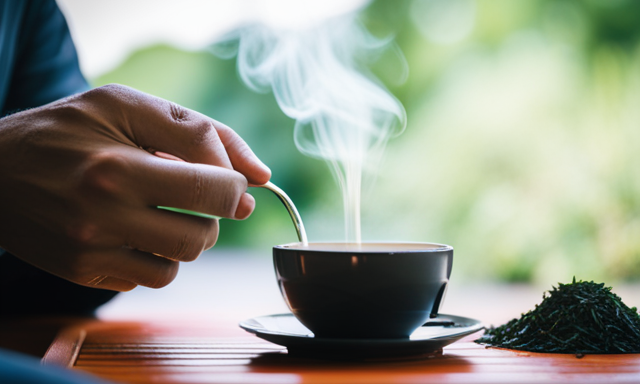As humans, we all have bodily functions that are essential for our overall well-being. One of these functions is digestion, a process that ensures the absorption of nutrients and the elimination of waste. And let’s be honest, there’s nothing quite as satisfying as a good bowel movement. It’s a sign that our bodies are functioning properly and that we’re taking care of ourselves.
But sometimes, it can be a struggle to ‘go’ when we need to. That’s where the concept of what makes you poop instantly comes in. In this article, I’ll explore various techniques and strategies that can help get things moving smoothly and efficiently.
From incorporating high-fiber foods into your diet to staying hydrated and engaging in regular exercise, there are several natural ways to promote healthy bowel movements.
So, if you’re ready to learn more about how to relieve constipation and establish a regular routine, keep reading. Your digestive system will thank you!
Key Takeaways
- High-fiber foods and fiber supplements regulate bowel movements and prevent constipation.
- Staying hydrated by drinking an adequate amount of water softens stools and promotes regular bowel movements.
- Regular exercise, such as yoga and jogging, stimulates bowel movements and maintains a healthy digestive system.
- Natural laxatives like prunes, flaxseeds, and aloe vera juice can alleviate constipation and promote regular bowel movements.
High-Fiber Foods
Want to have a swift trip to the bathroom? Load up on high-fiber foods and watch your digestion kick into high gear! Fiber is essential for a healthy digestive system, and it can help regulate bowel movements. Incorporating fiber-rich foods into your diet, such as fruits, vegetables, and whole grains, can promote regularity and prevent constipation.
Additionally, fiber supplements can provide an extra boost if you’re not getting enough through your diet alone. Whole grain options like brown rice, whole wheat bread, and oats are excellent sources of fiber that can stimulate bowel movements. However, it’s important to increase your fiber intake gradually and drink plenty of water to avoid discomfort.
Speaking of hydration, staying adequately hydrated is also crucial for maintaining a healthy digestive system and promoting regular bowel movements.
Hydration
Stay hydrated, and you’ll be amazed at how quickly your digestive system becomes more efficient. Hydration is essential for a healthy digestive system, as it helps soften the stool, making it easier to pass.
When you don’t drink enough water, your body tries to conserve it, leading to hard and dry stools, which can cause constipation. By staying properly hydrated, you can prevent this discomfort and promote regular bowel movements.
The benefits of hydration extend beyond just digestion; it also helps maintain healthy skin, regulate body temperature, and support overall wellbeing.
To ensure you’re drinking enough water, aim for at least eight 8-ounce glasses per day, or follow the general guideline of drinking half your body weight in ounces. So, by staying hydrated, you’re taking an important step towards a healthy digestive system, but that’s not all.
Regular exercise also plays a significant role in promoting bowel regularity.
Regular Exercise
Regular exercise is an effective way to stimulate bowel movements and maintain a healthy digestive system. Engaging in physical activities that involve abdominal movements, such as yoga or jogging, can help to promote regularity and prevent constipation. These activities increase the contractions of the abdominal muscles, which can stimulate the movement of waste through the intestines.
Engage in physical activity to stimulate bowel movements
Get moving and watch as your bowels start to move too, helping you poop effortlessly! Engaging in physical activity not only has numerous physical benefits but also has positive effects on your mental well-being.
Regular exercise improves digestion by increasing blood flow to the intestines, which helps stimulate bowel movements. It also helps regulate hormonal levels, reducing stress and anxiety that can contribute to constipation.
Activities like jogging, cycling, or swimming can be effective in promoting regular bowel movements. Additionally, exercises that involve abdominal movements, such as yoga or Pilates, can specifically target the muscles in your abdomen and promote healthy bowel function.
So, if you’re looking for a natural way to stimulate your bowels and improve your digestion, try incorporating physical activities that involve abdominal movements.
Try activities that involve abdominal movements, such as yoga or jogging
Engaging in activities that involve abdominal movements, such as yoga or jogging, can help improve digestion and promote regular bowel movements, leading to a healthier and more comfortable lifestyle.
Yoga, in particular, offers numerous benefits for the digestive system. The twisting and bending poses performed during a yoga session help massage the abdominal organs, stimulating the digestive process and encouraging the elimination of waste. Additionally, the deep breathing techniques practiced in yoga can help relax the body and reduce stress, which can also contribute to better digestion.
Similarly, jogging is a great form of exercise that activates the abdominal muscles, increasing blood flow to the digestive system and promoting bowel regularity.
By incorporating these activities into your routine, you can support a healthy digestive system and experience more regular and comfortable bowel movements.
Transitioning into the subsequent section about natural laxatives, it’s important to explore other methods that can also help alleviate constipation.
Natural Laxatives
When it comes to finding natural remedies for constipation, there are a few key options to consider. Prunes, flaxseeds, and aloe vera juice have all been known to have laxative effects and can help with regular bowel movements. It’s important to consult with a healthcare professional before trying any new supplements to ensure they’re safe and effective for your individual needs.
Consider natural remedies like prunes, flaxseeds, or aloe vera juice
Try incorporating natural remedies like prunes, flaxseeds, or aloe vera juice into your diet to get a quick boost in your digestive system! Prunes, for example, have long been known for their laxative effects due to their high fiber content. They also contain sorbitol, a natural sugar alcohol that can help soften the stool and stimulate bowel movements. Aloe vera juice, on the other hand, has been used for centuries to promote digestive health. It contains compounds that have anti-inflammatory and soothing properties, which can help alleviate constipation.
To give you a better understanding of the benefits of prunes and aloe vera, here is a table summarizing their key properties:
| Prunes | Aloe Vera Juice | |
|---|---|---|
| Fiber Content | High | Moderate |
| Laxative Effect | Yes | Yes |
| Anti-inflammatory Properties | No | Yes |
| Soothing Effect | No | Yes |
Remember, before incorporating any new supplements into your routine, it’s always a good idea to consult with a healthcare professional.
Consult with a healthcare professional before trying any new supplements
It’s always wise to seek advice from a healthcare professional before experimenting with any new supplements for your digestive health. Healthcare precautions should be taken seriously to ensure your overall well-being.
When considering new supplements, it is important to be aware of potential side effects that may occur. These can range from mild discomfort to more serious gastrointestinal issues. Consulting with a healthcare professional can help identify any potential risks or interactions with other medications you may be taking. They can provide valuable guidance on the appropriate dosage and frequency of use. Additionally, they can offer alternative suggestions that may be more suitable for your specific needs.
By taking these precautions, you can ensure that you are making informed decisions about your digestive health. Now, let’s explore relaxation techniques that can further aid in promoting a healthy gut.
Relaxation Techniques
By practicing relaxation techniques, you can quickly ease your body into a state that promotes instant bowel movements. Relaxation techniques such as deep breathing, meditation, and progressive muscle relaxation can help activate the parasympathetic nervous system, which is responsible for stimulating digestion and bowel movements. Deep breathing involves taking slow, deep breaths and exhaling fully, which helps relax the muscles in the abdomen and promote bowel movements. Meditation can help reduce stress and anxiety, which can often contribute to constipation. Progressive muscle relaxation involves tensing and then relaxing different muscle groups in the body, which can help relieve tension and promote bowel movements. Incorporating these relaxation techniques into your daily routine can provide natural remedies for constipation and help maintain a healthy digestive system. In the next section, we will explore how establishing a routine can further support regular bowel movements.
Establish a Routine
To establish a routine that promotes regular bowel movements, you’ll need to create a consistent schedule for eating, exercising, and using the bathroom. This means eating meals at the same time each day, engaging in physical activity regularly, and making sure to set aside time for bathroom breaks.
Establishing consistency in these areas can help regulate your digestive system and improve bowel regularity.
Here is a breakdown of what a routine for promoting regular bowel movements might look like:
-
Eating: Aim to have meals at consistent times each day, preferably around the same time every day.
-
Exercising: Engage in physical activity regularly, such as walking, jogging, or yoga, to help stimulate bowel movements.
-
Bathroom breaks: Set aside time for regular bathroom breaks, ideally after meals or when you feel the urge to go.
By creating a schedule that encompasses these aspects, you can establish a routine that supports healthy bowel movements.
Transitioning to the next section about ‘medical intervention,’ it’s important to note that establishing a routine is often the first step in managing bowel movements before seeking medical assistance.
Medical Intervention
Consider consulting a healthcare professional for medical intervention options that can address any underlying issues causing irregular bowel movements. Medical procedures and medication options can be effective in treating chronic constipation or other conditions that contribute to slow or irregular bowel movements. Some common medical procedures for addressing bowel issues include colonoscopy, which allows the doctor to examine the colon and rectum for abnormalities, and biofeedback therapy, which helps to retrain the muscles involved in bowel movements. In addition to procedures, there are also various medication options available that can help regulate bowel movements. These may include laxatives, stool softeners, or prescription medications that stimulate bowel activity. It is important to consult with a healthcare professional to determine the most appropriate medical intervention for your specific condition.
| Medical Procedures | Medication Options |
|---|---|
| Colonoscopy | Laxatives |
| Biofeedback Therapy | Stool Softeners |
| Prescription Medications |
Frequently Asked Questions
Can certain medications or medical conditions affect bowel movements?
Yes, certain medications and medical conditions can affect bowel movements. Medications like antibiotics and laxatives can cause diarrhea or constipation. Medical conditions such as irritable bowel syndrome or inflammatory bowel disease can also impact bowel regularity.
Is it normal to have different bowel movement patterns based on age?
Different factors, such as age, can influence bowel movement patterns. It is normal to have different patterns as we age due to changes in metabolism and digestion. Maintaining a healthy diet is important for regular bowel movements.
How long does it typically take for high-fiber foods to have an effect on bowel movements?
High-fiber foods usually take about 12-48 hours to have an effect on bowel movements, depending on individual factors. It is important to consume fiber supplements and stay hydrated to promote regular and healthy bowel movements.
Are there any relaxation techniques specifically designed to promote bowel movements?
Yoga poses and breathing exercises can help promote bowel movements by relaxing the body and reducing stress. These techniques can be effective in improving digestion and relieving constipation.
What role does stress play in bowel movements?
Stress and anxiety can have a significant impact on bowel movements. When we are stressed, our bodies release stress hormones that can affect digestion. Additionally, an unhealthy lifestyle, including poor diet and lack of exercise, can also contribute to digestive issues.
Conclusion
In conclusion, prioritizing a healthy diet, staying hydrated, and exercising regularly can help regulate bowel movements and promote regularity. Incorporating natural laxatives and relaxation techniques can also be beneficial. Establishing a routine is crucial in maintaining a healthy digestive system. However, it’s important to note that everyone’s body is unique, and what works for one person may not work for another. If you experience chronic or severe constipation, it’s advisable to seek medical intervention to identify the underlying cause and receive appropriate treatment. Remember, taking care of your digestive health is essential for overall well-being.










